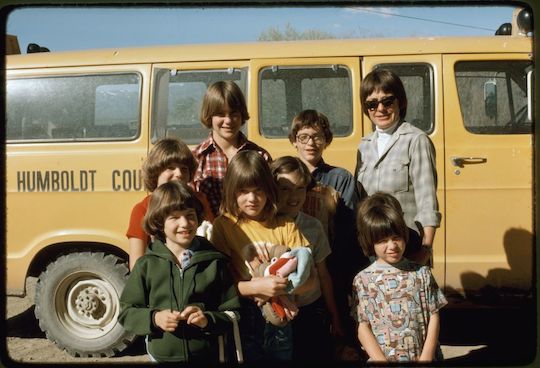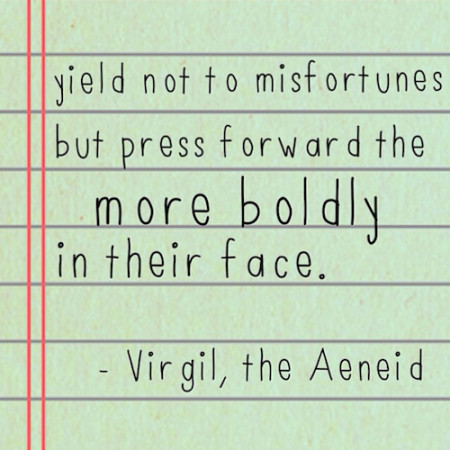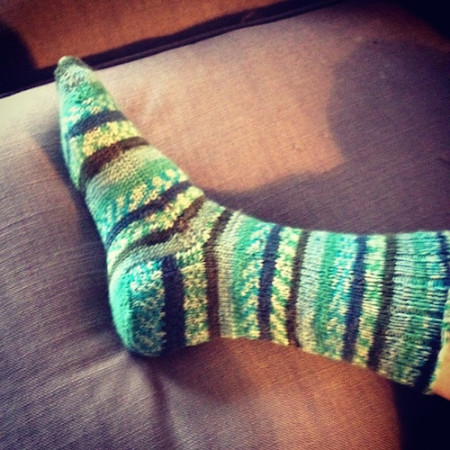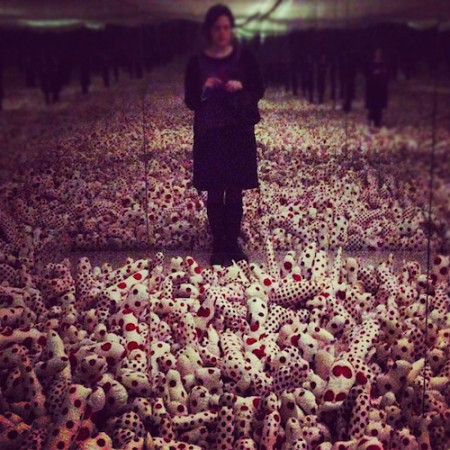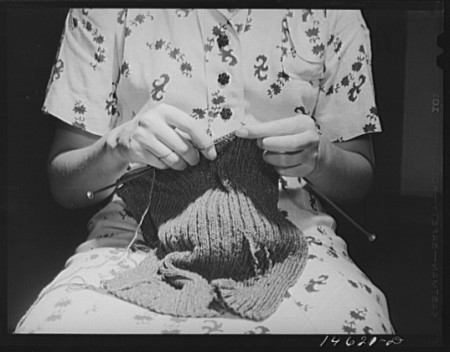
So Emily Matchar’s article in the New York Times, Sorry, Etsy. That Handmade Scarf Won’t Save the World., last week was, in a word, flawed. It came up on my radar 3x in 1 week, actually, from radically different individuals.
Here’s the thing, though, she has valid points. Here’s the other thing, I think they’re the wrong points.
1. “Once a mark of poverty, handmade is hot these days.”
Um, really? For everyone? First of all, when making things by hand started, it was necessity, not poverty, that made it a reality. Secondly, this is not an objective truth. It’s a subjective statement, meaning, “in my world, [handmade was] once a mark of poverty.” Thirdly, this statement sucks all the joy out of making, suggesting that craft is solely about making ends meet post-Industrial Revolution, not about actually enjoying said act of craft. This is not a hot note to start on, but I digress.
2. “Our hunger for handmade has gone beyond aesthetics, uniqueness and quality. In progressive circles, buying handmade has come to connote moral virtue, signifying an interest in sustainability and a commitment to social justice.”
Nope nopity nope nope. Just because I care about sustainability and social justice doesn’t mean I get high on “moral virtue.” It means that I give a crap about how things are made and how the people that make them are treated. I make and buy handmade solely because of “aesthetics, uniqueness and quality.” And know scores of people who do, too. The fact that the Times has printed this as from a person who speaks for crafters is two things: a) sad and b) possibly delusional. I’ve read her writing and agree she has her points. However, her points are not the points of many of us.
3. “While buying homemade gifts is a lovely thing to do, thinking of it as a social good is problematic.”
According to Emily it is problematic. Because actually, here’s how and why craft can save the world. Learning to sew and knit and make garments teaches us how they are constructed. Those hours that we spend making garments are not to make ourselves socially superior. We make things because we like to make things. (Or maybe Matchar just hates making things and wants to prove a point?) And in learning how to make things, we begin to understand that the $10 shirt we buy at the store with the handbeading takes 10 hours (or more!) to make. Making things allows us to put this together, which then changes our buying practices. Since we’re a friendly bunch, our friends sometimes want to learn how to make things too, thus, they end up changing their own buying practices. We’re like a cult of slow-moving awesome.
4. “Very few of us will order a $50 handmade scarf on Etsy when one is available for $5 at Target.”
What if the $5 one is horrible and the $50 is just what we want? Once we learn how to construct garments, the game changes. Plus, nylon won’t do wool’s job, amiright? Once we start to make things, we see that if we make (or buy) something that we truly want, we will want to keep it for 10 years (and if we’re choosy about materials, it can even last that long!), not 10 weeks. Making things wisens us up to the fast-fashion problem. And once we begin to put things in our wardrobes that we actually want, they stay. Items that we kind of-sort of like end up being discarded soon.
5. “Is it better for my dollar to go to the likable, just-like-me Brooklyn mom selling handmade headbands on Etsy or to a company that uses garment factories like Alta Gracia?”
Ah, Alta Gracia. This one sounds pretty good, right? Well, not until you realize that there is only ONE Alta Gracia. In fact, it is such a special unicorn there was that whole book written about it. Yes, it is better to put your money towards factories like Alta Gracia. But, in the fast fashion world, Alta Gracia’s are not the norm. Your average factory is doing things like locking doors on workers and not providing toilet paper and not conducting safety checks on fire escapes. Additionally, according to their website, Alta Gracia “sells “collegiate branded products†to the bookstore retail channel.” Now I sure as heck love my hoodies, but wearing sweatpants 24/7 is not my jam. If it is your jam, I apologize, as you were, you elastic-loving shapeless charmer! You are safe in the knowledge that your money is well spent! Yeah!
6. “These same economies of scale most likely make a toothbrush factory less wasteful, in terms of materials, than 100 individual toothbrush makers each handcrafting 10 toothbrushes a day.”
Wait a minute. How did we get to dental products? I am so confused. I do love an argument that is predicated with the words “most likely,” however, don’t you? In other words, there is nothing to see here, she’s just guessing at something to make an argument. Emily dear, I’ve seen your writing, you are worth more than guessing about toothbrushes in an article about scarves.
7. “A potentially positive effect of the handmade movement has been the creation of a new income stream for parents (mostly mothers) and others who need flexible work.”
Yes. This is a truism. The handmade movement has provided a lot of people flexibility to try new ventures. To some that ups the number of crochet dilettantes, but to me, it just means more people trying different ideas on for size… which is pretty dang rad.
8. “It’s important to support artisans who retain knowledge of traditional art forms. Many handmade items are also higher quality than their mass-produced counterparts.”
Yes. This is also true. However, where do they fit in terms of Alta Gracia-level quality? Because if they are better than mass-produced goods, which you clearly state here, your strongest argument so far (#5), is further falling to pieces.
9. “But will buying handmade change the economy or save the world? Not likely.”
According to you it won’t, that is. However, for people off making garments (and shocker, they are even enjoying it!) and realizing the sham of fast fashion, things are changing. Their decisions are making dents in how our future will roll. Small dents, but they are making dents.
Now, when I started my career writing about crafts, I told myself I would never ever be negative about someone’s work. And look, here I am. Am I a hypocrite? Perhaps. However, I’d like to think that I’m speaking up for all the people making changes in their clothes-buying habits. The ones slowly changing how they think about materialism and fast fashion. The ones creating positive dialogue about handmade things, instead of trying to tear down something they don’t even particularly seem to like.
Handmade was here before the resurgence that began around the turn of this century. And it will stay. And people will learn lessons from it and continue to make items they want for their wardrobes. And these choices will be freeing and amazing and ultimately help change the conversation away from needing to hit the latest sale at The Gap. No, it will not be a fast change, but making garments isn’t a fast process, either. And we like it that way.
And no, my tiny blog is not the New York Times. But maybe, just maybe, someone will read this and remember that handmade can save the world in its own way. And feel proud about wanting to learn new things, instead of dissed at doing it for “moral virtue.”
Yes, there is room for all sorts of voices regarding craft, even for this article I’m railing against. And because there’s room for it, there’s also room for a piece that is a reminder of how good craft can be. How good makers can be. How good for us (on a global level) it is to learn how to make things. How making things gives us an education about how unfair things are in this world. And, yes, a piece about how our skills can change the world, by the items that we create, by the purchases we don’t make, and the resulting conversations we have in that wake.

